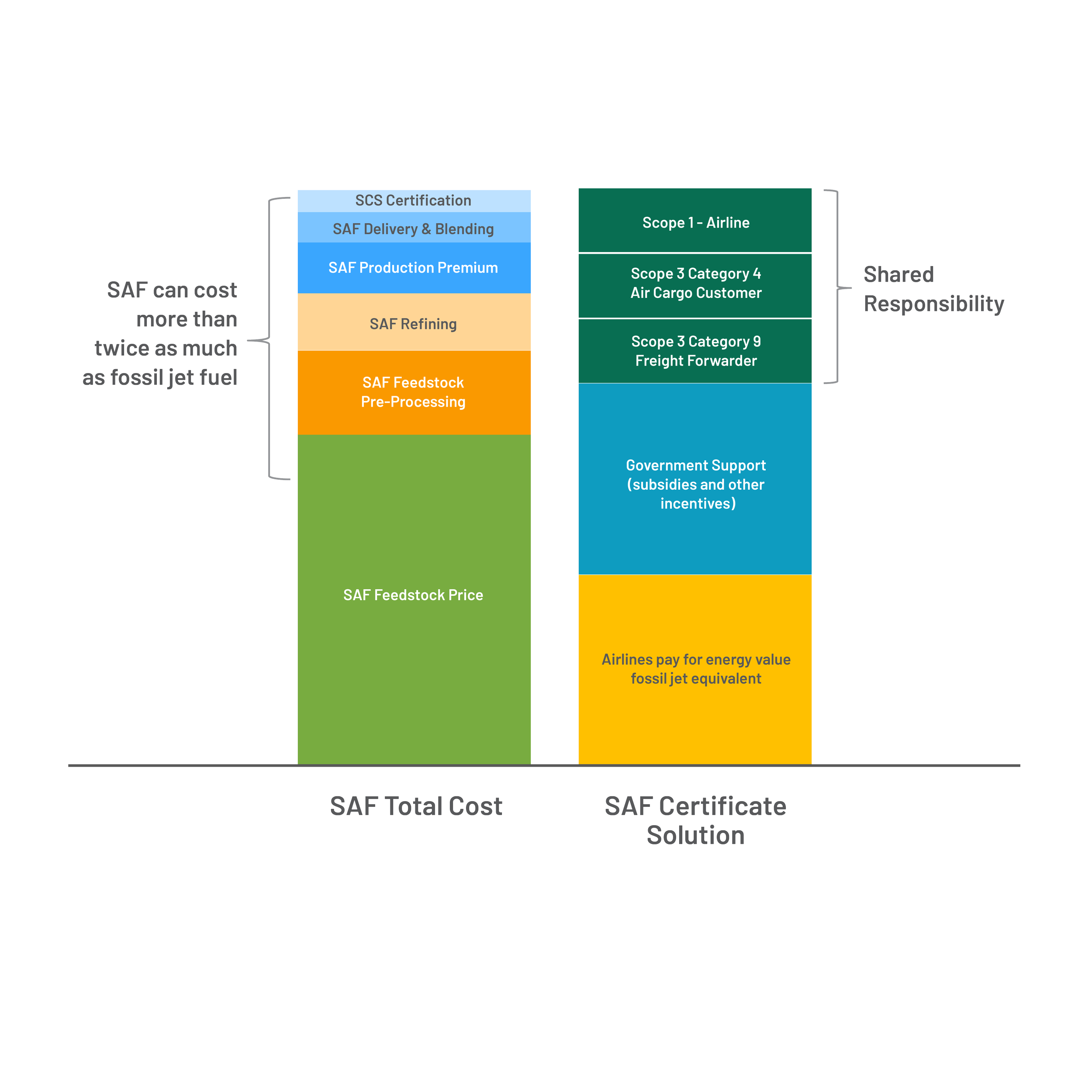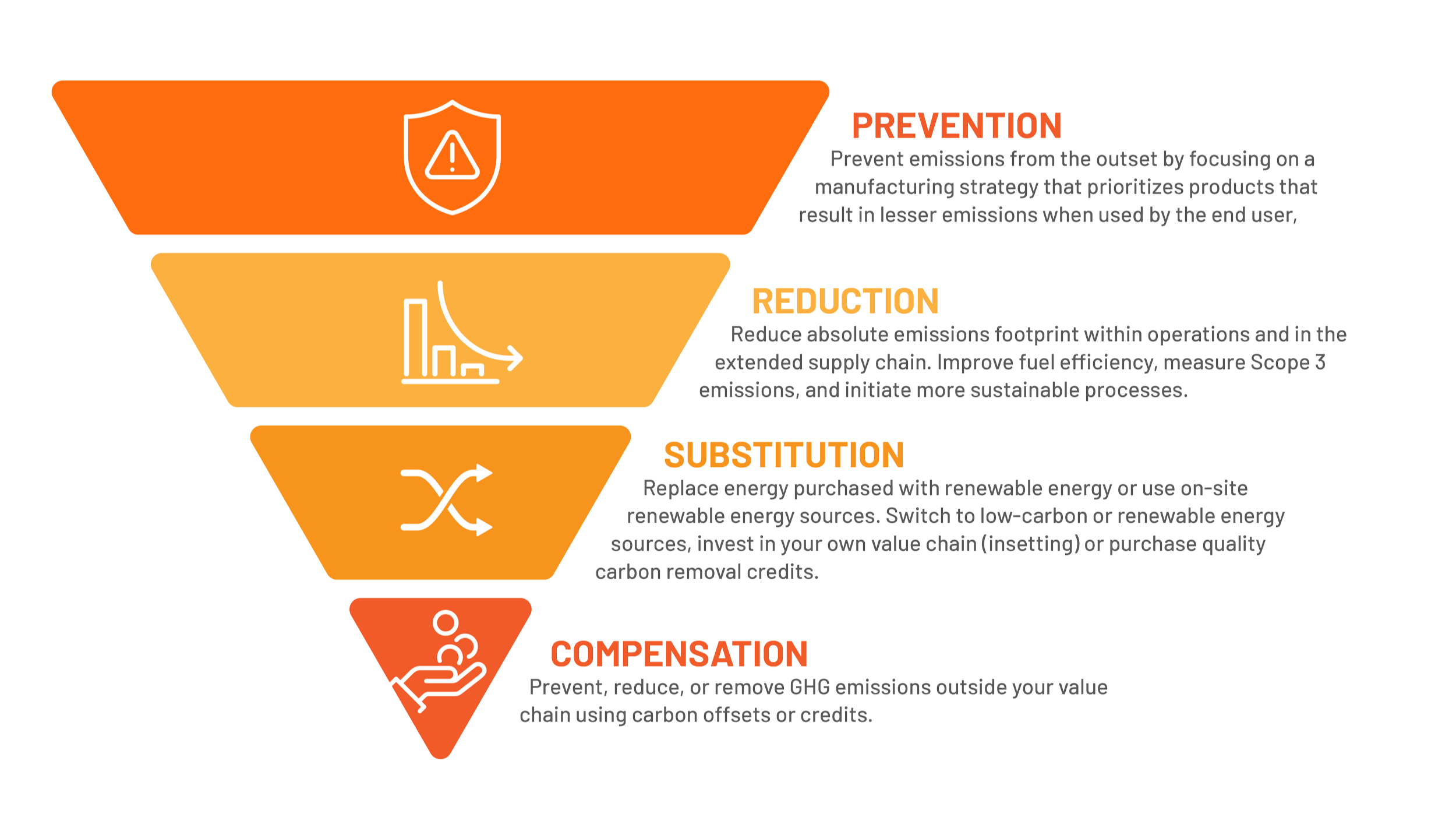It Takes Radical Collaboration to Decarbonize Aviation
Adam Klauber
VP Sustainability and Digital Supply Chain
-
World Energy
The aviation industry faces a fundamental challenge in its path to decarbonization. While sustainable aviation fuel (SAF) represents the most viable solution for reaching the industry’s climate goals, the economics of who shoulders the cost for SAF is a complex question where traditional carbon accounting is not fit for purpose.
The Cost Burden Dilemma
Airlines operate on razor-thin margins of approximately three percent, according to the International Air Transport Association (IATA). With jet fuel representing about 25 percent of operating costs, and SAF costing at least twice as much as conventional fuel, airlines simply cannot absorb the premium on their own. This economic reality threatens to stall progress in one of the hardest sectors to decarbonize.
The total cost of SAF includes the premium feedstock price, which makes up the majority of the cost, as well as costs for pre-processing, refining, production, delivery, blending, and certification. However, SAF certificates (SAFc), which are a type of carbon inset, are proof that responsibility can be shared across the aviation value chain with portion of the cost burden being addressed through government support, airlines, and corporations who rely on airlines for business travel and freight.
Multiple parties can share responsibility and benefits
SOURCE: MODIFICATION OF SUSTAINABLE AVIATION BUYER'S ALLIANCE SAF COSTS
The Solution: Insets
Insets, which represent decarbonization within a sector’s value chain, offer a promising solution to the cost burden dilemma by bringing downstream customers into the decarbonization equation. When companies like Microsoft purchase SAFc insets to address their Scope 3 emissions from business travel and air cargo, they help bridge the cost gap while creating crucial market demand signals. This approach provides financing certainty that attracts investment in renewable fuel infrastructure, accelerating the entire sector's transition.
However, this collaborative approach is currently incompatible with traditional carbon accounting frameworks that have not yet recognized mitigation benefits across multiple parties in the value chain.
Book & Claim: A Sophisticated Framework for Tracking Decarbonization
The Book & Claim mechanism, championed by organizations like the Roundtable on Sustainable Biomaterials (RSB), offers a sophisticated framework for Scope 3 cost collaboration. Unlike physical delivery models, Book & Claim creates a certification and registry system that tracks environmental attributes separately from physical commodity flows, enabling market integrity without requiring SAF molecules to be in a specific aircraft’s fuel tank.
This creates a framework where trust is built through transparency and verification.
Addressing Airline Concerns
Airlines understandably want to remain in the "pilot's seat" of their decarbonization efforts, expressing concerns about SAFc inset credits being claimed without their involvement as Scope 1 parties. Airlines have also interpreted Science Based Targets initiative (SBTi) aviation guidance to mean that airlines must hold title to SAF benefits before Scope 3 companies.
Luckily, these concerns already have solutions within existing frameworks. The Roundtable on Sustainable Biomaterials (RSB) Book & Claim guidance mandates a named airline party for valid emission reductions and SAF registries require a named Scope 1 party before a credit can be retired. And SBTi aviation guidance, clarified and properly interpreted, supports supply chain collaboration while maintaining clear accountability. The guidance's emphasis on proving "clear chain of custody for SAF consumption down, rather than across, the value chain" enables direct contracting between Scope 3 parties and producers. In the future, a mature secondary market, where airlines can trade surplus SAFc with each other. will increase financial institutions confidence that SAF and its environmental attributes can be trusted as a reliable commercial mechanism.
Building Trust in a New Market
Successful implementing this solution requires building market confidence through robust measurement, reporting, and verification (MRV) systems while enabling flexible trading mechanisms that spread costs across willing participants.
Digital registries and third-party auditing create the foundation of trust, ensuring that every SAF certificate corresponds to actual sustainable fuel production and that environmental benefits are not double counted. Meanwhile, the trading framework enables corporate customers to provide the demand certainty that reduces financing risks and ultimately lowers costs for everyone.
This approach transforms the traditional linear supply chain into a collaborative network where multiple parties can contribute to decarbonization based on their capabilities and incentives, rather than forcing all costs onto the party least able to bear them.
Moral Hazards and Shared Responsibility
Critics worry about moral hazards—the risk that shared mitigation might reduce airlines' incentive to reduce emissions they’re responsible for. However, solutions don’t exist at scale today for hard-to-abate industries like aviation, and progress will stall if only Scope 1 parties like airlines, are recognized in accounting systems, or if their customers can’t share the mitigation with their carriers. Airlines simply cannot meet their 2050 climate goals with this approach.
The hierarchy of climate action still prioritizes emission prevention and elimination, but collaborative approaches can still help. In fact, this approach is the most pragmatic and effective path forward. Rather than creating moral hazards, well-designed Book & Claim systems create aligned incentives where all parties contribute to and benefit from successful decarbonization.
Prioritizing Climate Mitigation Actions
Source: Modification of Terrascope's Mitigation Hierarchy
The Path Forward: Radical Collaboration
When the GHG protocol created the concept for supply chain (Scope 3) emissions, multiple parties became responsible for the same CO2 emissions. The World Economic Forum’s Clean Skies for Tomorrow built on the same logic for its mitigation solution—in effect, multiple companies in the value chain could pay for the same action and spread the cost burden.
Success requires acceptance from regulators, operators, and NGOs that shared mitigation benefits represent sound climate policy. Organizations including the Book & Claim Community and the Advanced and Indirect Mitigation (AIM) platform are already building support for this collaborative approach. And the initial draft of SBTi’s revised corporate standard call out aviation as a sector that needs a viable Book & Claim system.
The aviation industry stands at a crossroads. It can either continue struggling with an approach that concentrates all costs on the parties least able to bear them, or embrace innovative frameworks that bring all members of the value chain to the table. Insets and Book & Claim offer the tools to choose the latter path—building market integrity without requiring SAF molecules to follow passengers, and creating the financial incentives needed to scale sustainable aviation fuel production.
Climate action is the largest, most complex group project humanity is tasked with today. Everyone has a part to play.




